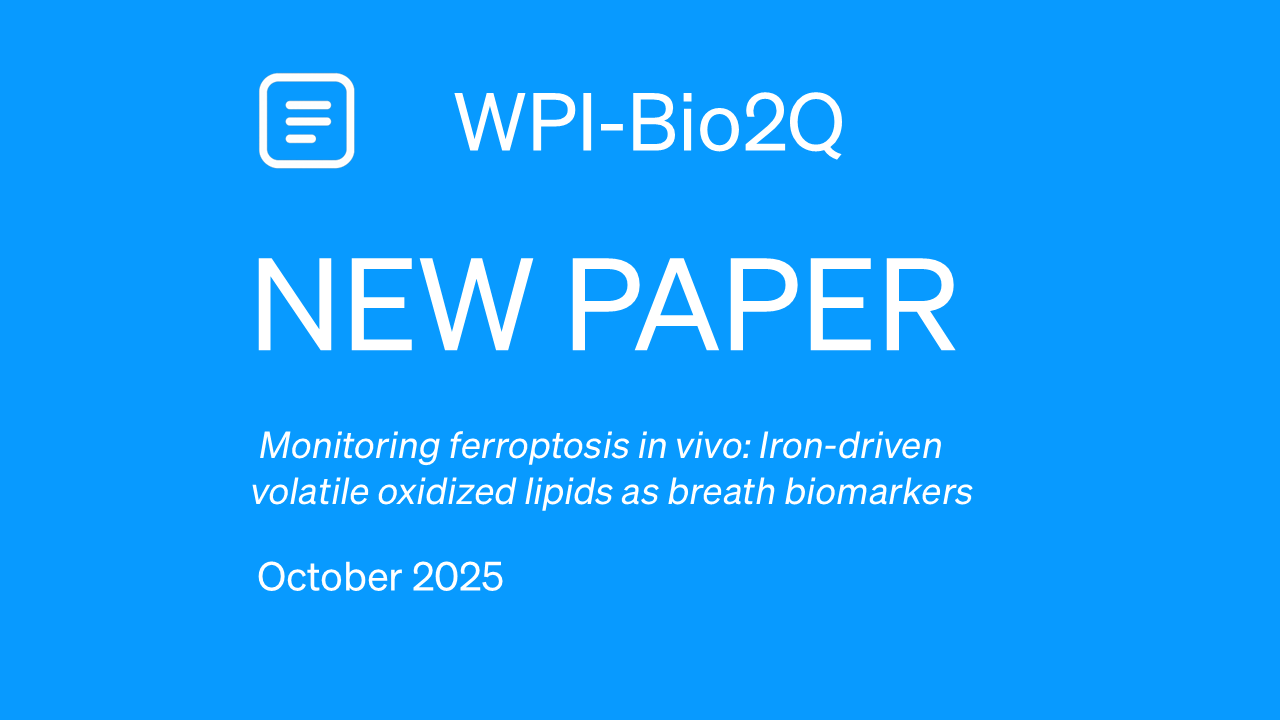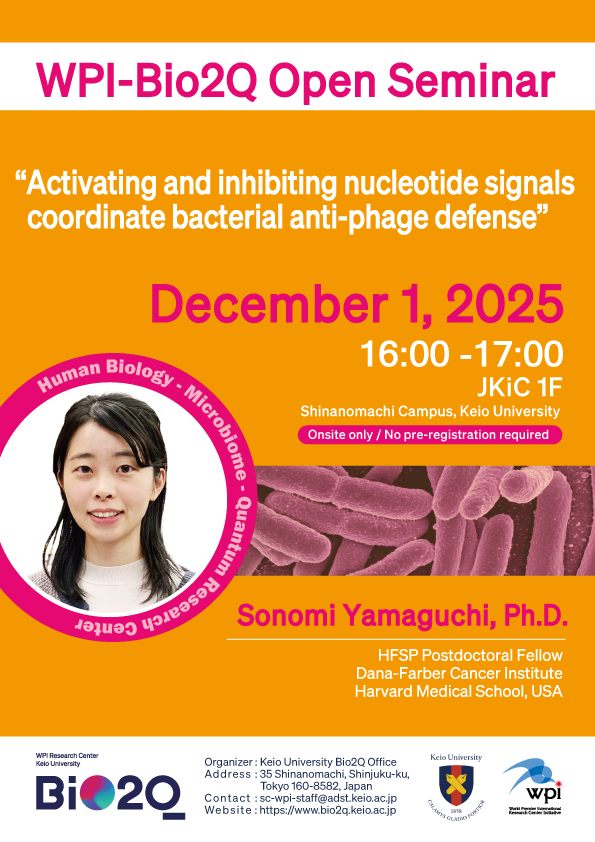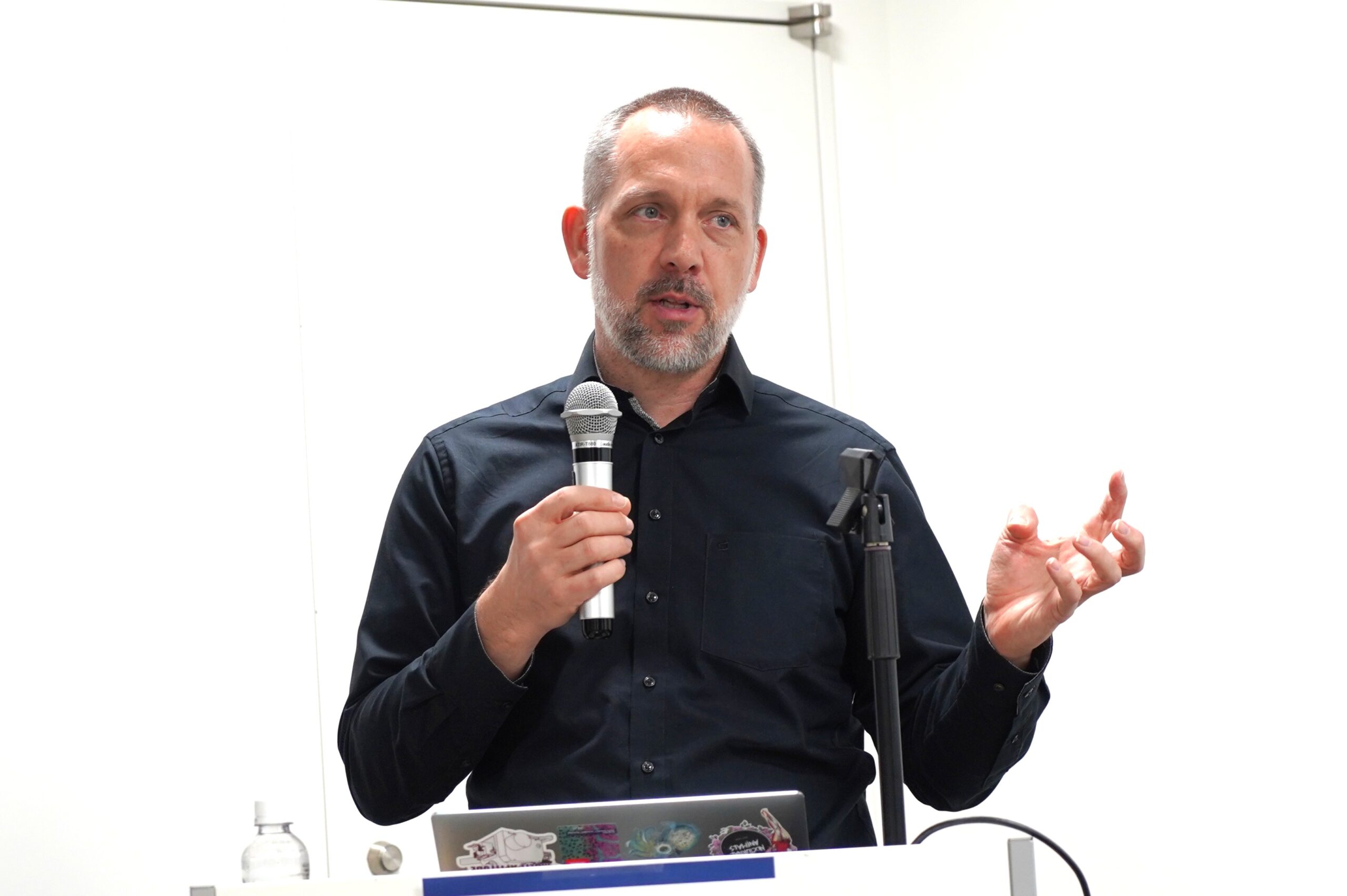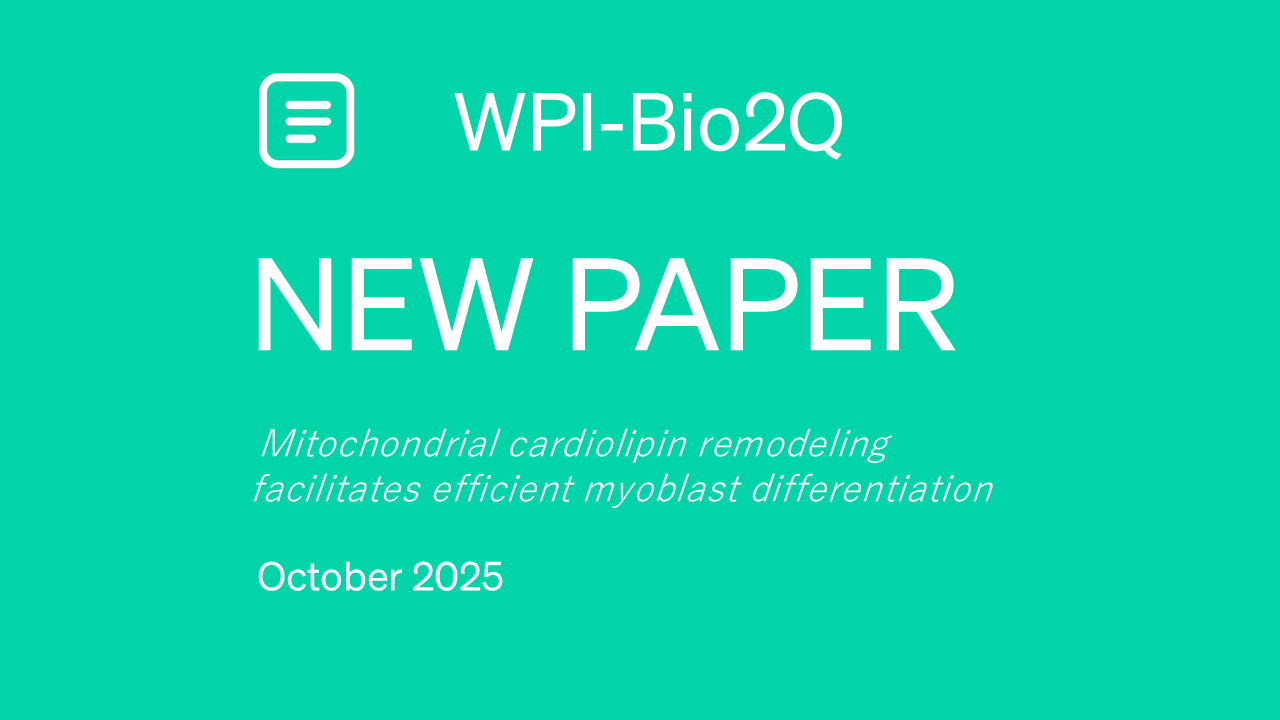RESEARCH
[Publication]Monitoring ferroptosis in vivo: Iron-driven volatile oxidized lipids as breath biomarkers
November 21, 2025

Credits: WPI-Bio2Q
Researchers from Bio2Q and Keio University have developed a noninvasive method to detect ferroptosis by analyzing volatile oxidized lipids in breath. These lipids serve as potential biomarkers for lipid peroxidation and cellular stress.
| Titile | Monitoring ferroptosis in vivo: Iron-driven volatile oxidized lipids as breath biomarkers |
|---|---|
| Authors | Yuta Matsuoka [1], Yoshinori Katsumata [2], Po-Sung Chu [3], Rei Morikawa [3], Nobuhiro Nakamoto [3], Kohta Iguchi [4], Ken Takahashi [5], Tadayuki Kou [6], Ryo Ito [6], Kojiro Taura [4], Shujiro Yazumi [6], Hiroaki Terajima [4], Gen Honjo [7], Genki Ichihara [8], Yuki Muramoto [2], Kazuki Sato [2], Rae Maeda [9], Kazuhiro Hata [10], Naoya Toriu [11], Motoko Yanagita [11], Masaki Tajima [12], Sidonia Fagarasan [13], Ken-Ichi Yamada [14], Yuki Sugiura [15] |
| Short Description | An interdisciplinary team of researchers from Bio2Q, the Keio University School of Medicine, and other collaborating institutions have developed an innovative approach for detecting ferroptosis in vivo through volatile oxidized lipid (VOL) profiling. Ferroptosis, characterized by uncontrolled lipid peroxidation, has been linked to diverse pathologies but is challenging to study in humans due to the need for invasive tissue sampling. To overcome this, these researchers used advanced omics techniques to trace the volatile oxidized lipids produced during ferroptotic lipid breakdown. In mouse models of acetaminophen-induced liver injury and metabolic dysfunction-associated steatohepatitis (MASH), these VOLs were detectable in exhaled breath, including from human patients with MASH. These findings establish a new chemical signature of ferroptosis and suggest that VOLs have important translational potential as noninvasive breath biomarkers of lipid peroxidation and cellular stress. |
| DOI | 10.1016/j.redox.2025.103858. |
| Journal | Redox Biology |
| Vol/Num/Page | Volume 86 |
| Vol/Num/Page | Octber, 2025 |
Affiliations:
[1] Multi-Omics Platform, Center for Cancer Immunotherapy and Immunobiology, Kyoto University Graduate School of Medicine, Kyoto, Japan.
[2] Institute for Integrated Sports Medicine, Keio University School of Medicine, Tokyo, Japan.
[3] Division of Gastroenterology and Hepatology, Department of Internal Medicine, Keio University School of Medicine, Tokyo, Japan.
[4] Department of Gastroenterological Surgery and Oncology, Tazuke Kofukai Medical Research Institute, Kitano Hospital, Osaka, Japan.
[5] Department of Gastroenterology, Tazuke Kofukai Medical Research Institute, Kitano Hospital, Osaka, Japan; Department of Gastroenterology and Hepatology, Kyoto University Graduate School of Medicine, Kyoto, Japan; Division of Cancer Immunotherapy, Center for Cancer Immunotherapy and Immunobiology, Kyoto University Graduate School of Medicine, Kyoto, Japan.
[6] Department of Gastroenterology, Tazuke Kofukai Medical Research Institute, Kitano Hospital, Osaka, Japan.
[7] Department of Pathology, Tazuke Kofukai Medical Research Institute, Kitano Hospital, Osaka, Japan.
[8] Institute for Integrated Sports Medicine, Keio University School of Medicine, Tokyo, Japan; Tokai University, Graduate School of Medicine, Kanagawa, Japan.
[9] Multi-Omics Platform, Center for Cancer Immunotherapy and Immunobiology, Kyoto University Graduate School of Medicine, Kyoto, Japan.
[10] Thermo Fisher Scientific K.K., Tokyo, Japan.
[11] Department of Nephrology, Graduate School of Medicine, Kyoto University, Kyoto, Japan; Institute for the Advanced Study of Human Biology, Kyoto University, Kyoto, Japan.
[12] Division of Integrated High-Order Regulatory Systems, Center for Cancer Immunotherapy and Immunobiology, Kyoto University Graduate School of Medicine, Kyoto, Japan.
[13] Division of Integrated High-Order Regulatory Systems, Center for Cancer Immunotherapy and Immunobiology, Kyoto University Graduate School of Medicine, Kyoto, Japan; Laboratory for Mucosal Immunity, Center for Integrative Medical Sciences, RIKEN Yokohama Institute, Yokohama, Japan.
[14] Department of Molecular Pathobiology, Faculty of Pharmaceutical Sciences, Kyushu University, Fukuoka, Japan.
[15] Multi-Omics Platform, Center for Cancer Immunotherapy and Immunobiology, Kyoto University Graduate School of Medicine, Kyoto, Japan; Human Biology Microbiome Quantum Research Center, Keio University School of Medicine, Tokyo, Japan.
More Bio2Q News
New Research Internship Student - Ms. Enya Mistry
Introducing a new Research Internship Student of Bio2Q We are delighted to welcome Ms. Enya Mistry as a Research Internship Student of Bio2...
【Seminar】 WPI-Bio2Q Open Seminar: Sonomi Yamaguchi, Ph.D.(for Keio Members)
Keio University Human Biology-Microbiome-Quantum Research Center (WPI-Bio2Q) will hold a seminar as follows. This is an event for faculty, s...
【Seminar Report】WPI-Bio2Q Open Seminar
Keio University Human Biology-Microbiome-Quantum Research Center (WPI-Bio2Q) held a seminar as follows. 15:00 -16:30 November 13, 2025 ...
【Seminar Report】WPI-Bio2Q Open Seminar
Keio University Human Biology-Microbiome-Quantum Research Center (WPI-Bio2Q) held a seminar as follows. 17:00 -18:00 November 12, 2025 ...
[Publication] Mitochondrial cardiolipin remodeling facilitates efficient myoblas...
Researchers from Bio2Q and Keio University found that mitochondrial lipid remodeling plays a key role in early muscle cell differentiation. ...












